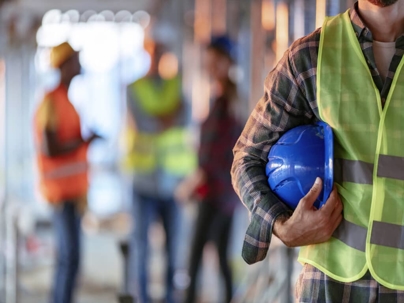From forklifts and backhoes to machine presses and assembly line equipment, many workers earn their living using huge and highly dangerous machines. Inevitably, some of them suffer serious or fatal injuries.
So what legal options do victims have following machine-related accidents in the workplace?
Apart from workers’ compensation, which provides workers and their families with benefits in lieu of claims against their employer, some workplace accidents may give rise to negligence and / or strict products liability claims against a third-party – often a manufacturer, distributor, or retailer responsible for a defective product.
Examples of Industrial Machine & Equipment Products Liability Cases
Heavy equipment, machinery, and specialized tooling play important purposes in industrial work settings. Their use, however, is a factor in numerous workplace injuries and deaths each year. According to the Bureau of Labor Statistics, some of the most common machine-related injuries include:
- Crush injuries
- De-gloving injuries
- Loss of limbs / amputation
- Burns caused by explosions and fires
- Electric shock / electrocution
- Traumatic brain injuries
- Caught-in / between injuries (being caught in between two or more objects)
Machinery accidents can also involve many types of defects, including:
- Lack of machine guarding
- Defectively guarded point of operation
- Insufficient emergency stop mechanisms
- Absence of redundant safety devices
- Unsafe standing surfaces
- Sharp edges / sharp components
- Exposure to harmful substances Machines prone to overheating / fire
The types of machinery involved in these incidents can vary across industries and applications, including equipment and tools such as:
- Earth-moving devices, graders, and skidders
- Machine presses
- Abrasive / grinding devices
- Cranes, forklifts, and loaders
- Material-forming / die-casting machines
- Fabric and textile machinery
- Well and oil-drilling machinery
- Food processing equipment
- Wood production and cutting machinery
- Metalworking machinery, presses, and laser cutting equipment
- Packaging and printing machines
Potentially Liable Parties: Who’s Responsible for a Defective Machine?
Determining potential Defendants is one of the first and most important steps in a products liability investigation. While the specific facts of an accident and industry will have great bearing on a case, Plaintiffs may bring products claims against:
- Manufacturers, distributors, and / or retailers who played a role in introducing a piece of equipment or machinery into the stream of commerce. For defective industrial machines, this may be the manufacturer of the product, or a distributor or wholesaler.
- Successor companies: If a machine that injured a worker was produced by a now-defunct business or is now being produced by another entity, Plaintiffs’ may be able to bring claims against the successor company under the Product Line Exception theory of liability.
- Rental and repair services: In some cases, retailers of used equipment, companies that rent or lease machinery, third party maintenance or repair services, or other similarly situated parties may bear liability for a victim’s damages.
- Component part manufacturers / distributors: As with vehicle defect cases, industrial products claims may also potentially be brought against component part manufacturers and distributors, provided the part was a substantial factor in causing harm.
- Employers: Generally, a worker’s direct employer is not a viable defendant in workplace accident cases due to the Workers’ Compensation Act’s exclusive remedy provision, which bars civil claims against employers. However, there are some exceptions to this provision. Examples include, among others, employers who remove a point of operation guard on a power press (i.e. material-forming machines which use a die in to manufacture products) (Lab. Code, § 4558). This statutory exception applies specifically to power presses for which machine guards are removed or knowingly not installed, often as a means to increase production. California Courts have ruled on what does and does not constitute a “power press” under the exception, and generally define them as machines which shape metal or manufacture other products using a die.
Strict Products Liability Claims Over Industrial Machines
Third party liability may arise from machine-related workplace accidents, either as a result of a third party negligence in operating the equipment, or as the result of a defective machine.
For the latter, California law provides options to Plaintiffs who pursue products claims against manufacturers, distributors, and others responsible for a defective product. These claims may allege:
- Manufacturing defects, such as the use of low quality of incorrect materials, or errors during assembly and installation that increase the risk of injury to operators and / or others.
- Marketing defects, which may involve a lack of proper warnings or instructions about a specific danger associated with the equipment.
- Design defects, which can include a lack of adequate safety devices (i.e. machine guarding, shut-off valves, etc.) or other potential hazards in a product’s design that a manufacturer could and should have known would increase the risk of foreseeable harm.
- Breach of warranty, including breach of an expressed warranty, or an implied warranty of merchantability (CACI 1230, CACI 1231).
Often, machinery accidents will give rise to claims that a machine was in some way defectively designed. Proving a design defect can be done in two ways:
Plaintiffs may choose to use either test when proving their claim, or both. The difference involves the evidence that will be heard by a jury. For example:
- The risk-benefit test involves the testimony of competing experts who provide their opinions about the risks and benefits of a design, and whether alternative safer designs were reasonable and feasible at the time the machine was made.
- The consumer-expectation test, on the other hand, does not require expert testimony, and instead focuses on evidence that speaks to the objective condition of the product. Juries are asked to make determinations as to whether the product meets ordinary expectations as to its safety under the circumstances
Although the risk-benefit test is often used in cases involving complex products and applications, California case law has established that the consumer-expectation test can be a viable means for proving a design defect.
As the 4th District Court of Appeal ruled in Demara v. The Raymond Corporation, the consumer expectation test can apply even to complex products or pieces of machinery when dangers and defects are “apparent to the common reason, experience, and understanding of its ordinary consumers.” The ruling further held that the test is not based on minimum safety assumptions held by all consumers, but rather the expectations of the product’s actual users.
The Court’s ruling in Demara means the consumer expectation test may effectively be used to demonstrate the inappropriateness of a design for a broad range of products – even those which perform highly complex tasks in industrial settings – and hold manufacturers to higher standards.
Defenses to Industrial Machine Products Claims
Products claims over defective industrial machines are subject to many of the common defenses in products cases, including comparative fault of the user or a third party (CACI No. 1207A and 1207B), misuse or modification (CACI No. 1245), and more.
These claims may also become a target for the sophisticated user defense, in which a Defendant accused of failing to warn argues they are not liable because the Plaintiff is a sophisticated user who, because of their position, training, experience, knowledge, and / or skill, knew or should have known about a product’s risk of harm (CACI No. 1244).
Overcoming such a defense requires assessment of what a user knew or should have known at the time of an accident. More importantly, Plaintiffs’ attorneys should anticipate such a defense when bringing a products liability claim over a Defendant’s failure to warn, and explore other alternatives for proving defects based on defective design or manufacturing, if supported by the facts, and especially if a Plaintiff may qualify as a sophisticated user.
Though industrial machinery cases can certainly make for highly technical, niche, and nuanced litigation, they can be handled successfully with preparation and the right approach. Rather than relying on highly technical expert testimony, for example, some Plaintiffs’ attorneys may carve a more viable and arguably more cost- and time-efficient venture by evaluating the consumer-expectations test and:
- Reviewing a product’s manuals, safety videos, and sales literature
- Evaluating the use of standards, including American National Standards Institute (ANSI) standards, and whether they hinder or help a case
- Conducting patent searches to find safer products which incorporate feasible technology that could have prevented the accident in question
- Finding evidence of prior accidents through discovery, claims or lawsuits against the entity, and other relevant reports
- Obtaining others’ investigations, including regulatory investigations (i.e. OSHA), and subrogation investigations conducted by the employer’s workers’ compensation insurance carrier.
- Demanding any and all documentation related to the design / manufacturing of a product, as well as any proposed or actual revisions.
Biren Law Group has extensive experience fighting on behalf of clients across Southern California who have suffered serious injuries or wrongful death in accidents involving industrial machines and products. To learn how we may be of assistance with your potential claim, call or contact us online.

